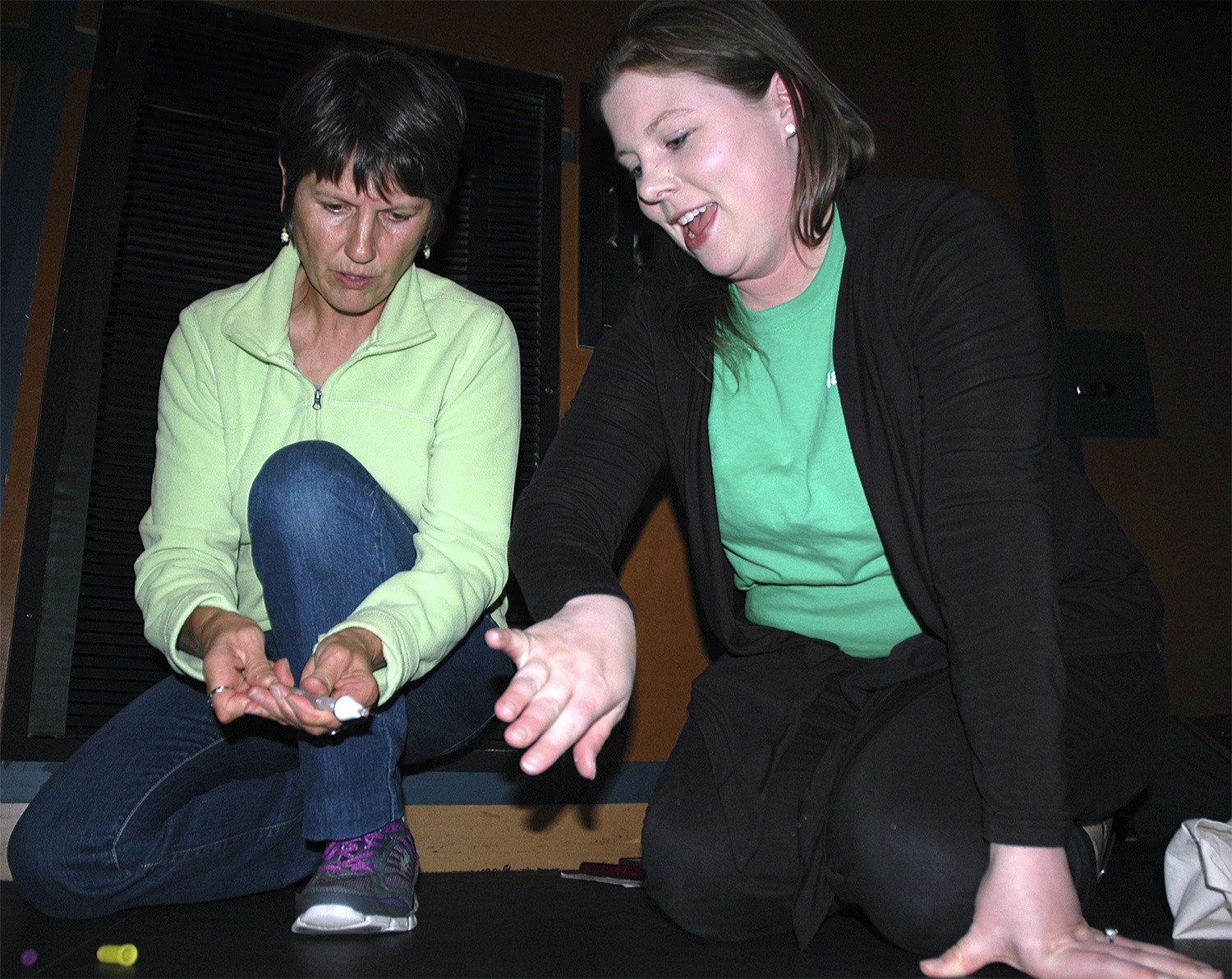ARLINGTON — The Arlington School District has reported that two of its schools are making Adequate Yearly Progress, according to the provisions of the No Child Left Behind Act of 2001, in the wake of the recently released results of the spring of 2009 administration of the Washington Assessment of Student Learning, as well as comments by state Superintendent Randy Dorn.
The Arlington School District scored below state averages for math in third and eighth grade, as well as science in 10th grade, but above state averages in all other subjects and grade levels. Dorn noted that, when compared to the previous year, state scores for this year had increased in seven subject areas, decreased in another seven and remained unchanged in six, but added that preliminary results from AYP show that 1,073 schools moved into improvement status, up from 618 last year.
“Our state testing scores are flat, yet the federal system shows an additional 500 schools are failing,” Dorn said. “What is failing is No Child Left Behind. The law is completely unfair. While we know there is certainly room for improvement in our schools, it’s a statistical guarantee in this law that all of our schools will soon be in federal improvement status. That’s unrealistic.”
Diane Kirchner-Scott, executive director of teaching and learning for the Arlington School District, and Amie Verellen-Grubbs, who addresses assessments and federal grants for the school district, explained that AYP is designed to ensure that all schools and districts make “adequate yearly progress” toward the goal of having every student meet academic standards on annual reading and math tests by 2014. They pointed out that AYP is measured by the performance of a number of subgroups, including those based on different ethnicities, those who receive “special services,” such as English Language Learners and those enrolled in special education, and those who qualify as “low income.” If the percentage of students meeting standards in any one of those subgroups falls below their targets, then the entire school is identified as falling short of making AYP.
Every three years, those targets move up, as they did last year, toward the goal of having 100 percent of students meet those standards by 2014. Schools and districts that do not meet AYP targets for two consecutive years move into “improvement” status and, if they receive federal Title I funds, face an escalating series of consequences each year they do not make AYP. Trafton, Presidents, Kent Prairie and Eagle Creek elementaries all receive Title I funds, as does Weston High School. Trafton made AYP this year, but Presidents and Kent Prairie did not, due to their reading and math scores in special education. Eagle Creek failed to meet AYP for the second year in a row. Last year, Eagle Creek fell short in reading and math for special education, and this year, it additionally fell short in math for low-income students. Eagle Creek families will have the option to transfer their students to other schools in the district, that are not in “improvement.”
Kirchner-Scott noted that the previous grade evaluation band has recently expanded, so that while AYP for elementary schools was judged solely by fourth grade before, it now includes third through fifth grades, and as a result, “We’re now being graded on things that weren’t called out before.” Verellen-Grubbs added that Trafton “will always make AYP,” due to the fact that its student body is too small for many subgroups to be evaluated, while Weston failed to make AYP solely as a result of its graduation rate, which is measured according to a four-year window, which many students who do graduate from Weston do not meet.
“We want all of our students to be learning at the highest level, but there’s a difference between saying, ‘Eagle Creek is not making AYP,’ and saying, ‘Eagle Creek is not making AYP in three of 18 cells,” Kirchner-Scott said.
“The intent of AYP, which is to set specific goals for student achievement, is very good, but the punitive side of it doesn’t reward the hard work that is being done,” Verellen-Grubbs said. “Post Middle School has been recognized by the state for the progress that it’s made, and yet, it didn’t make AYP.”
Kirchner-Scott explained that Arlington School District staff will be meeting with district families, and reevaluating both their instructional models and their allocations of resources. Verellen-Grubbs identified a high level of focus on math as one such change within the district, promising “a higher level of intervention” and more time spent with students on the subject, as part of the schools’ basic programs. This echoes Dorn’s advice for the state as a whole, when he predicted that, “If we continue on our current path, we’ll have 40 percent of our students not graduating in 2013, when it’s required for students to pass a state math assessment.”
The 2008-09 school year was the last for the WASL. Starting in the 2009-2010 school year, the WASL will be replaced by two new tests — the grades 3-8 Measurements of Student Progress, and the High School Proficiency Exam. The graduation requirements associated with high school state testing will remain the same, but schools will be able to volunteer to participate in online testing in the spring of 2010, for sixth through eighth grades in reading and math. Reading, math and science exams will take one day to administer instead of two.
Approximately 25 percent of students statewide in sixth through eighth grades are expected to participate in voluntary online testing in the spring of 2010. In the spring of 2011, fifth-graders will participate in online testing in reading, math and science, and eighth graders will also start online testing in science. In the spring of 2012, fourth-graders are expected to move to online testing in reading and math. Writing exams will debut online in the spring of 2011 for seventh and 10th-graders, with an online practice test beginning in the fall of 2010. OSPI is currently conducting feasibility studies for online testing in fourth grade writing and all subjects in third grade.
Arlington School District versus Washington state averages:
The Arlington School District scored the following WASL results for 2008-2009:
In third grade, 72.2 percent of students passed the reading exam, and 64.8 percent of students passed the math exam.
In fourth grade, 81.5 percent of students passed the reading exam, 55.7 percent of students passed the math exam, and 65.3 percent of students passed the writing exam.
In fifth grade, 80.3 percent of students passed the reading exam, 65.4 percent of students passed the math exam, and 58.4 percent of students passed the science exam.
In sixth grade, 83.2 percent of students passed the reading exam, and 59.5 percent of students passed the math exam.
In seventh grade, 72.8 percent of students passed the reading exam, 54.2 percent of students passed the math exam, and 81 percent of students passed the writing exam.
In eighth grade, 79.1 percent of students passed the reading exam, 50.6 percent of students passed the math exam, and 59.6 percent of students passed the science exam.
And in 10th grade, 87.7 percent of students passed the reading exam, 50.5 percent of students passed the math exam, 89.4 percent of students passed the writing exam, and 37.1 percent of students passed the science exam.
By contrast, Washington state as a whole scored the following WASL results for 2008-2009:
In third grade, 71.3 percent of students passed the reading exam, and 66.3 percent of students passed the math exam.
In fourth grade, 73.5 percent of students passed the reading exam, 52.3 percent of students passed the math exam, and 60.3 percent of students passed the writing exam.
In fifth grade, 73.9 percent of students passed the reading exam, 61.9 percent of students passed the math exam, and 44.9 percent of students passed the science exam.
In sixth grade, 72 percent of students passed the reading exam, and 50.9 percent of students passed the math exam.
In seventh grade, 59.3 percent of students passed the reading exam, 51.8 percent of students passed the math exam, and 69.7 percent of students passed the writing exam.
In eighth grade, 67.5 percent of students passed the reading exam, 50.8 percent of students passed the math exam, and 51.1 percent of students passed the science exam.
And in 10th grade, 80.9 percent of students passed the reading exam, 45.2 percent of students passed the math exam, 86.3 percent of students passed the writing exam, and 38.6 percent of students passed the science exam.






